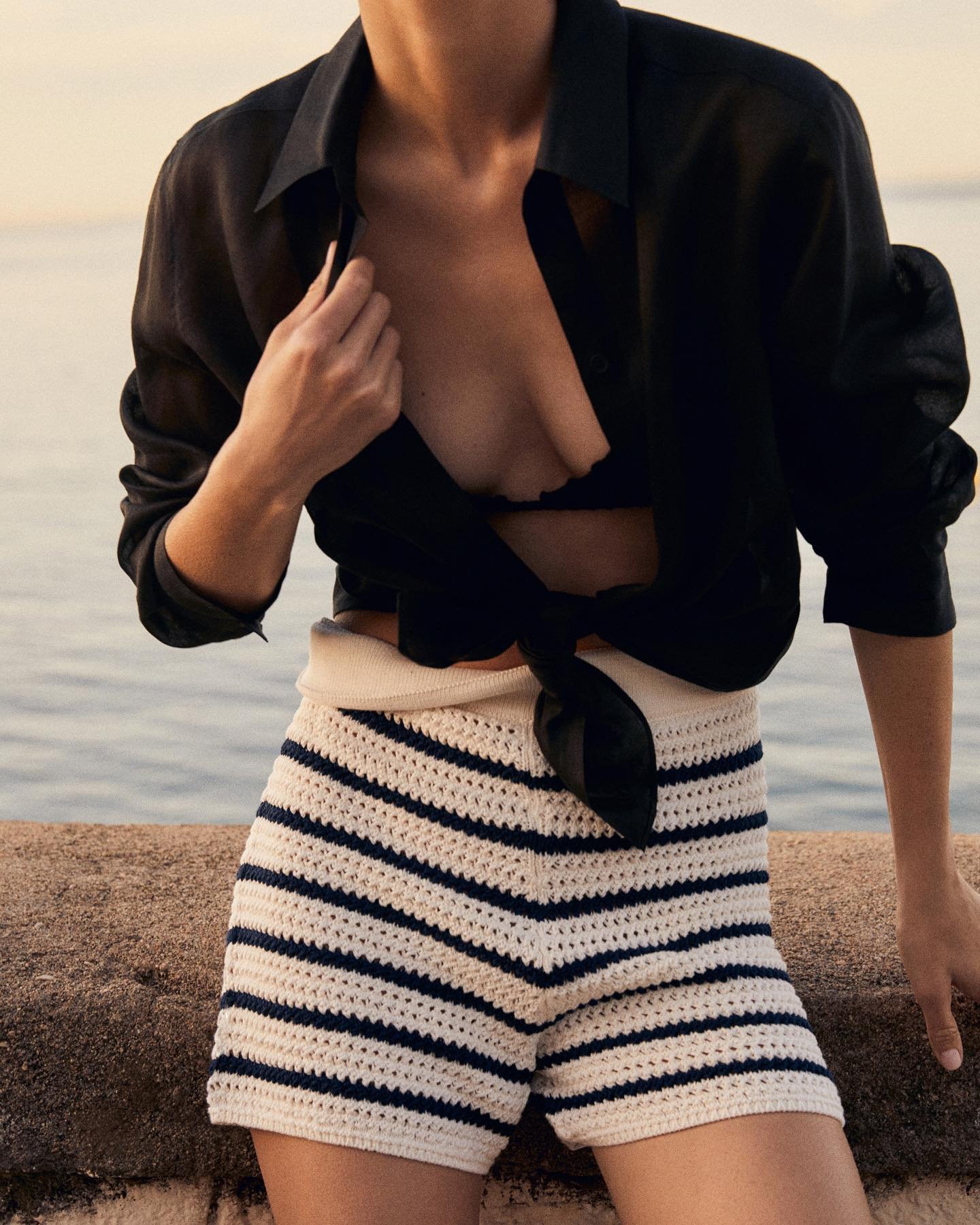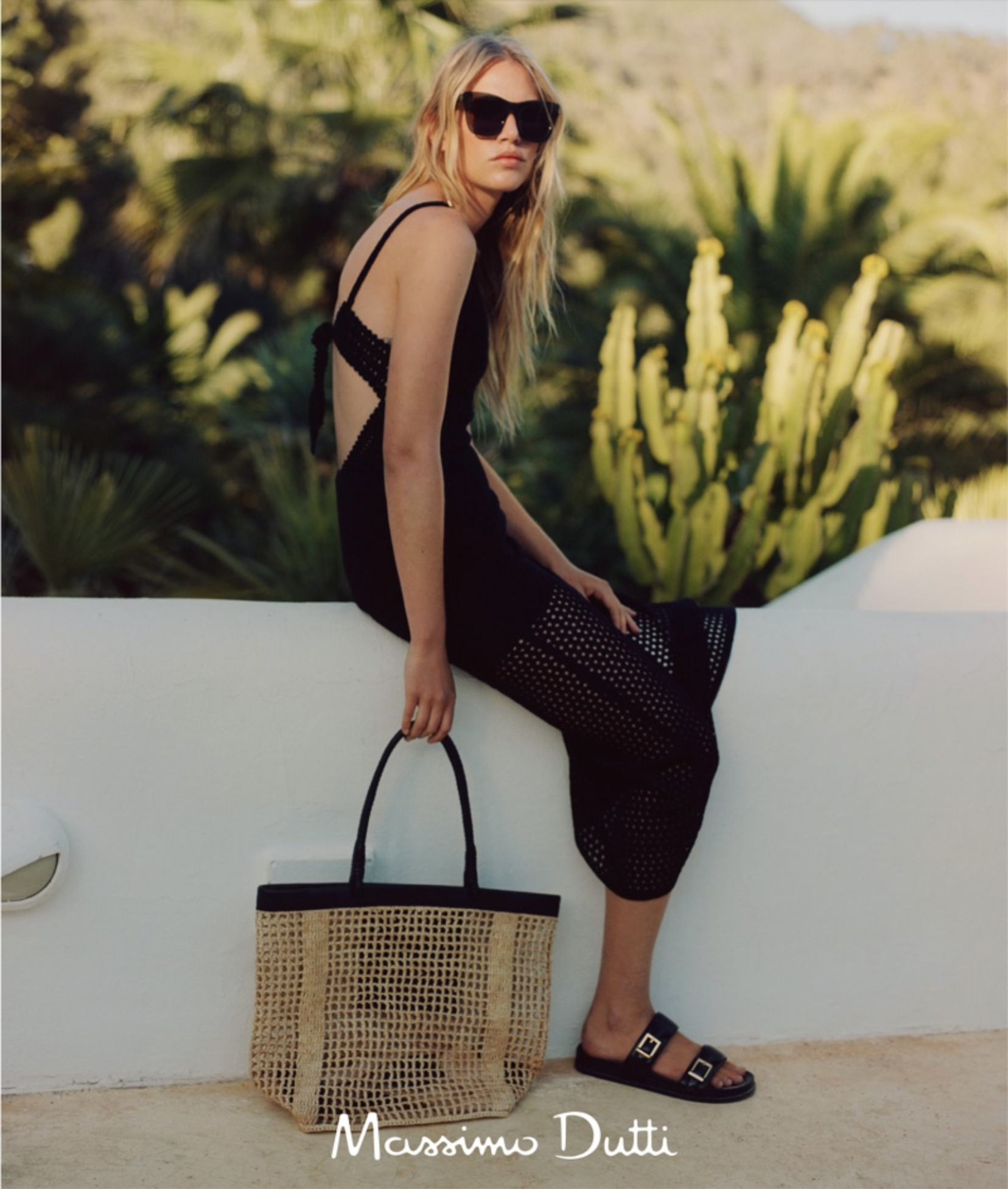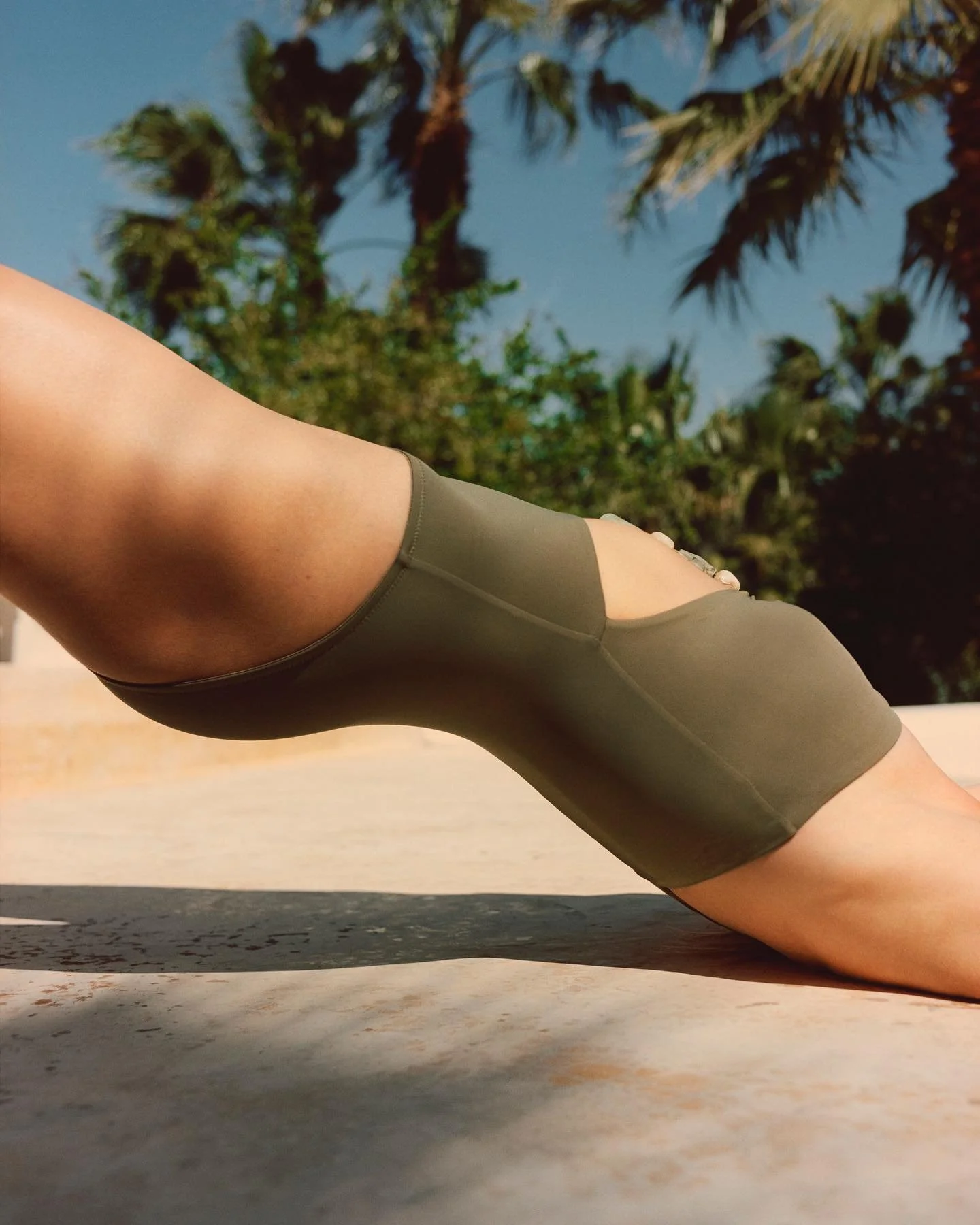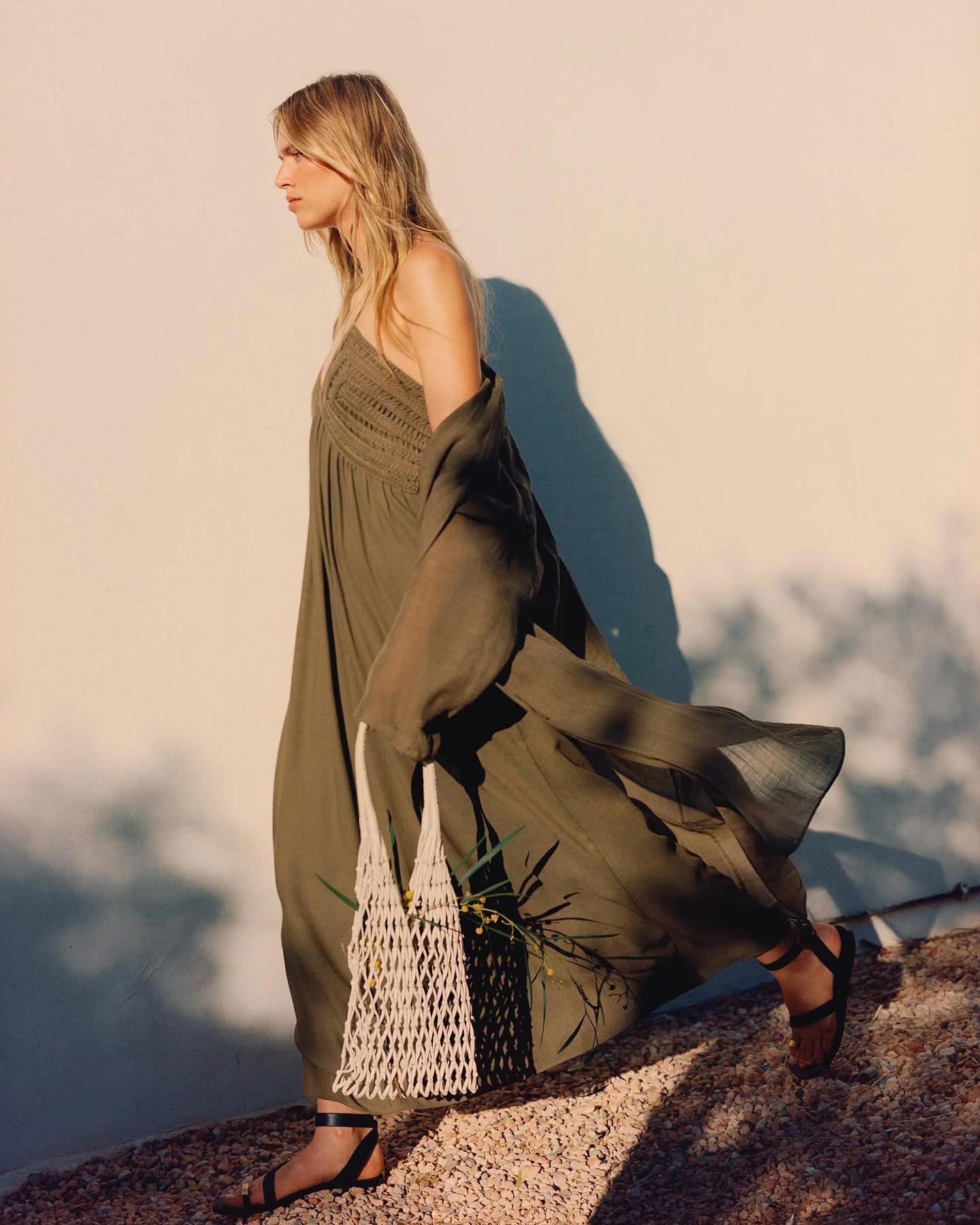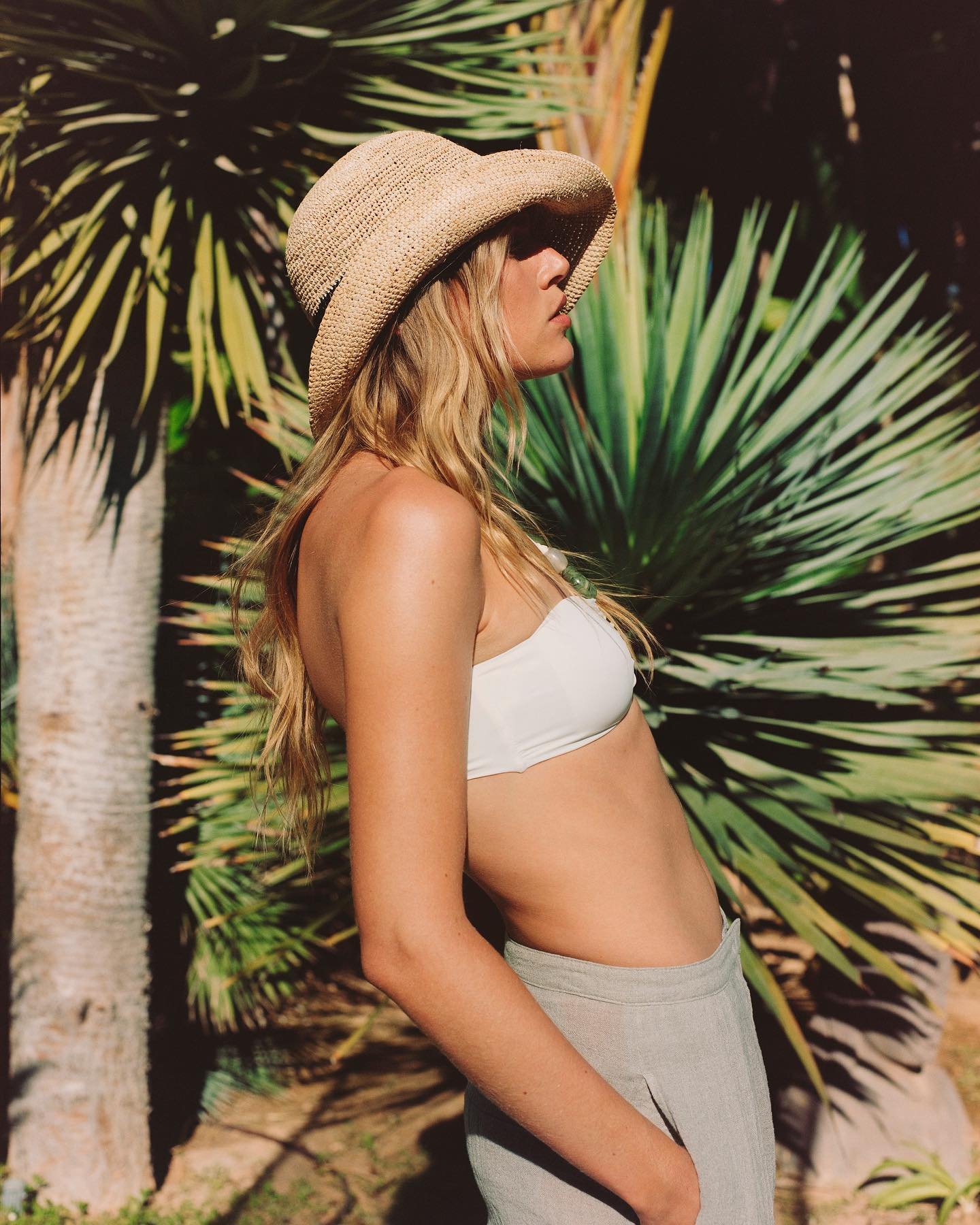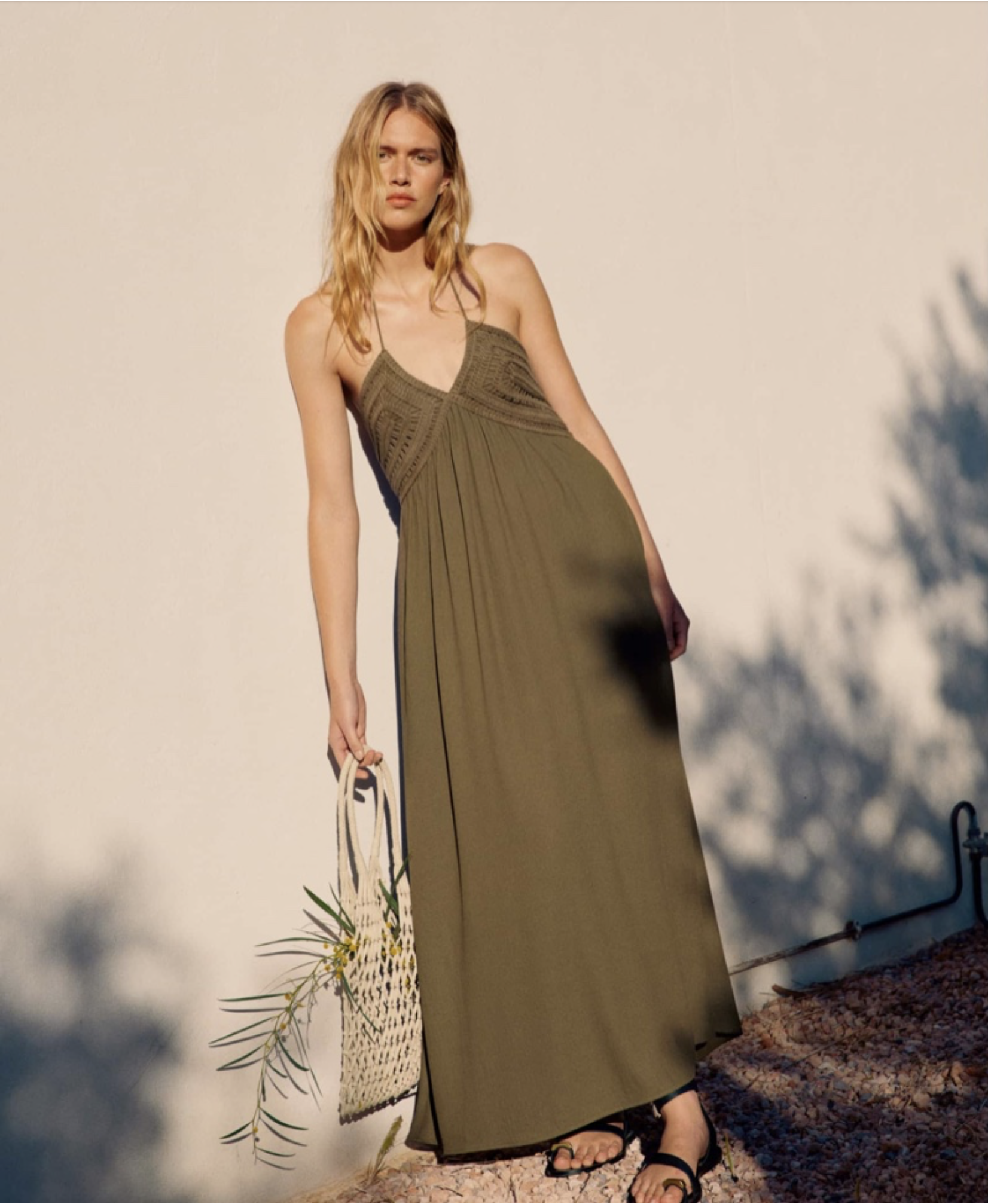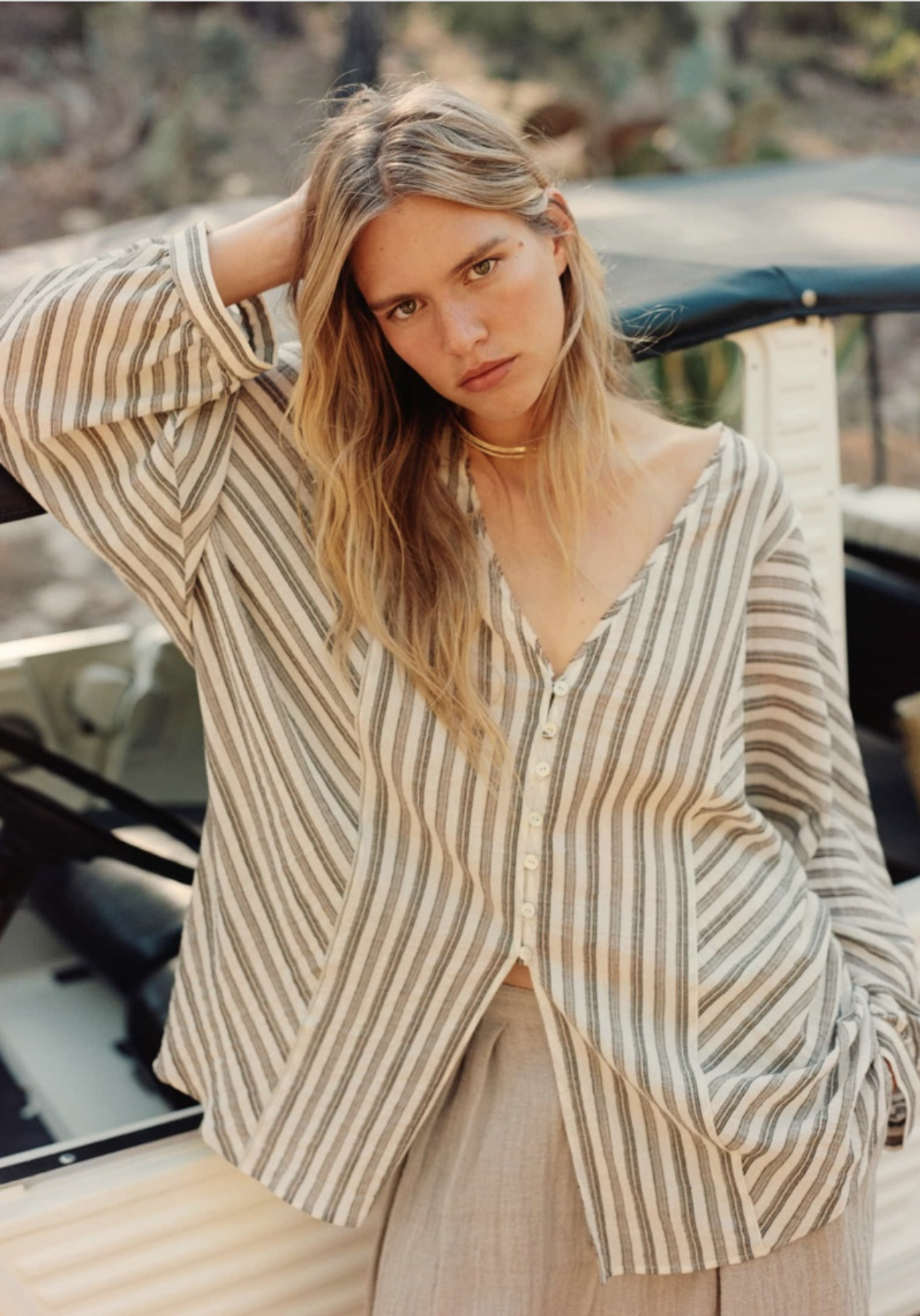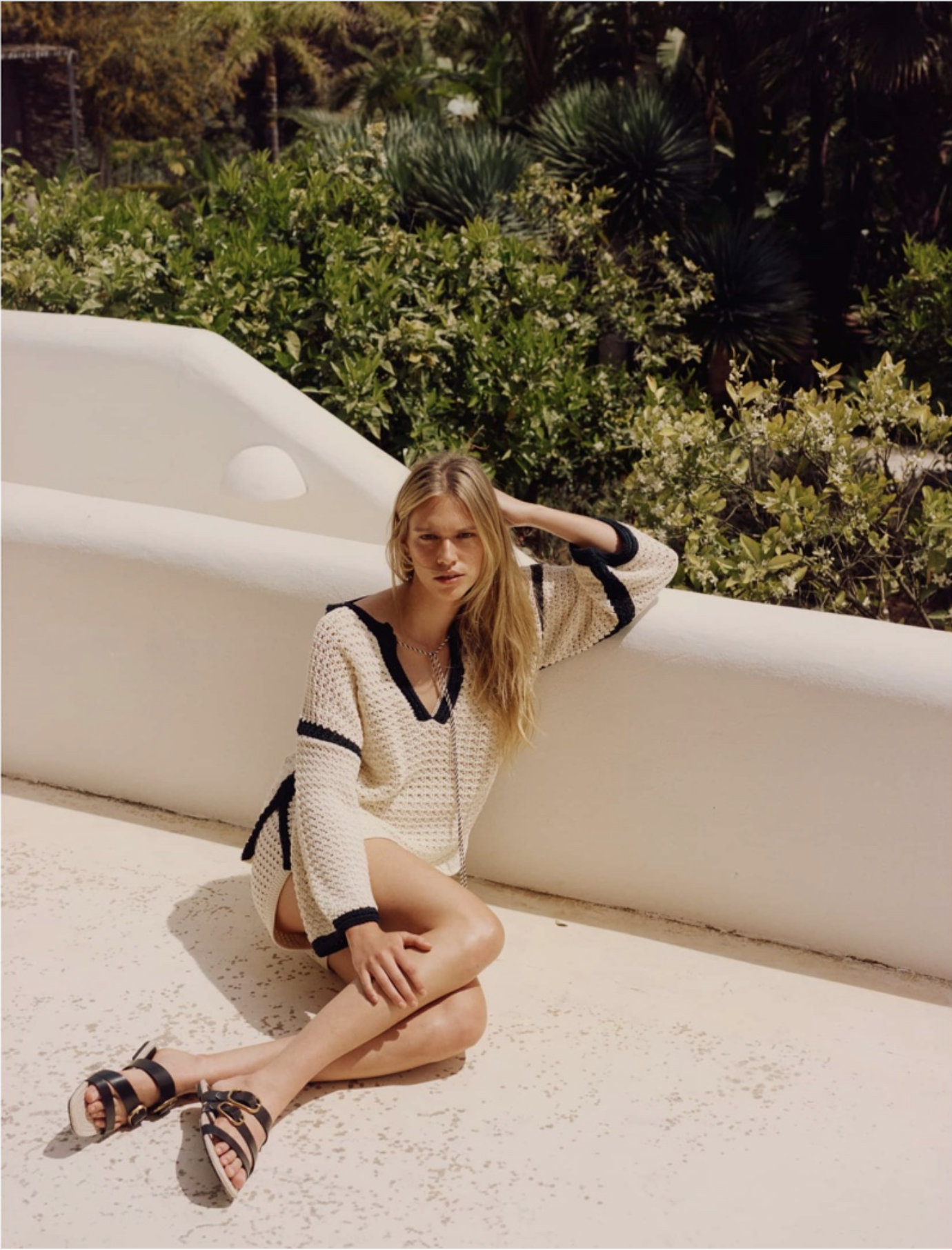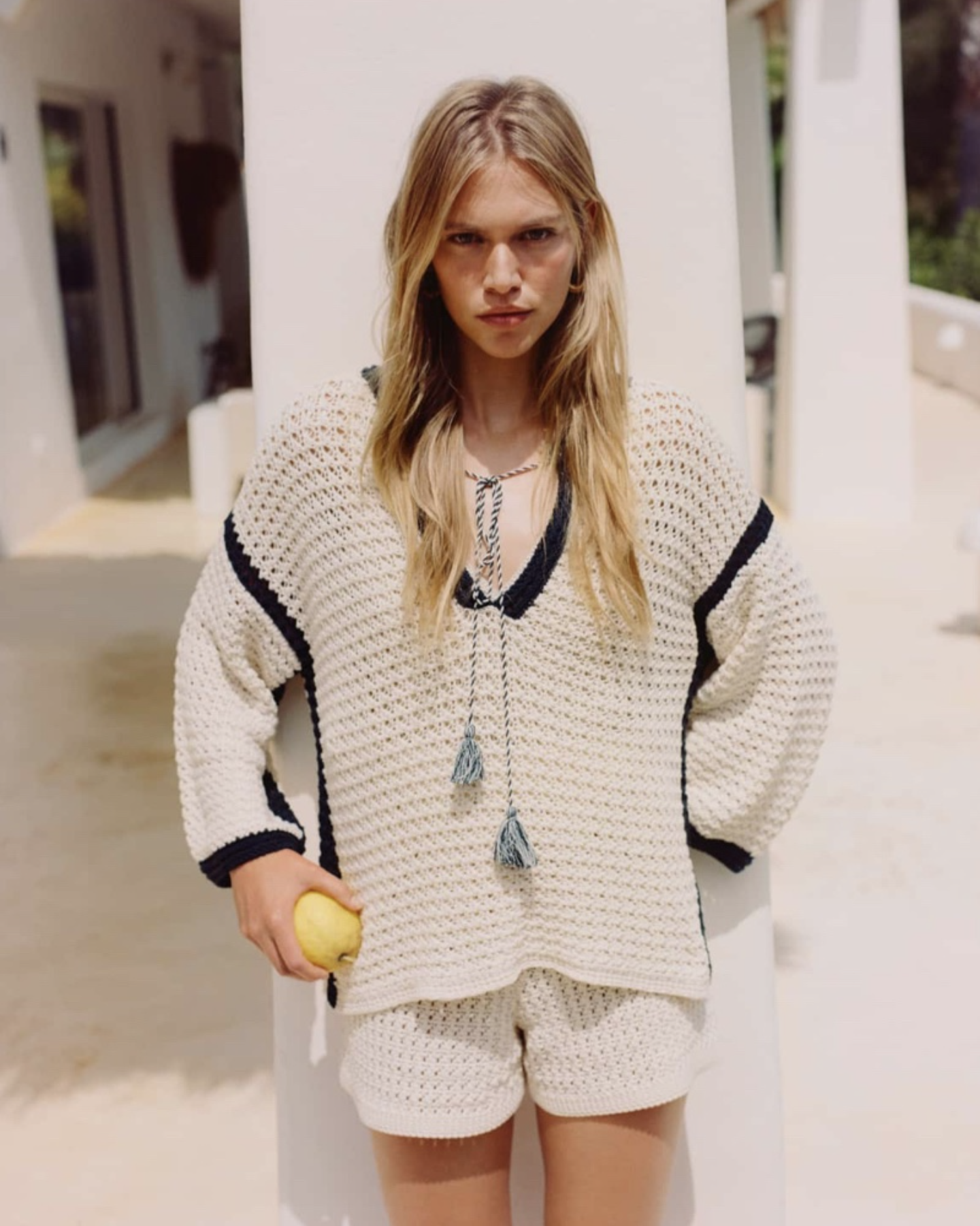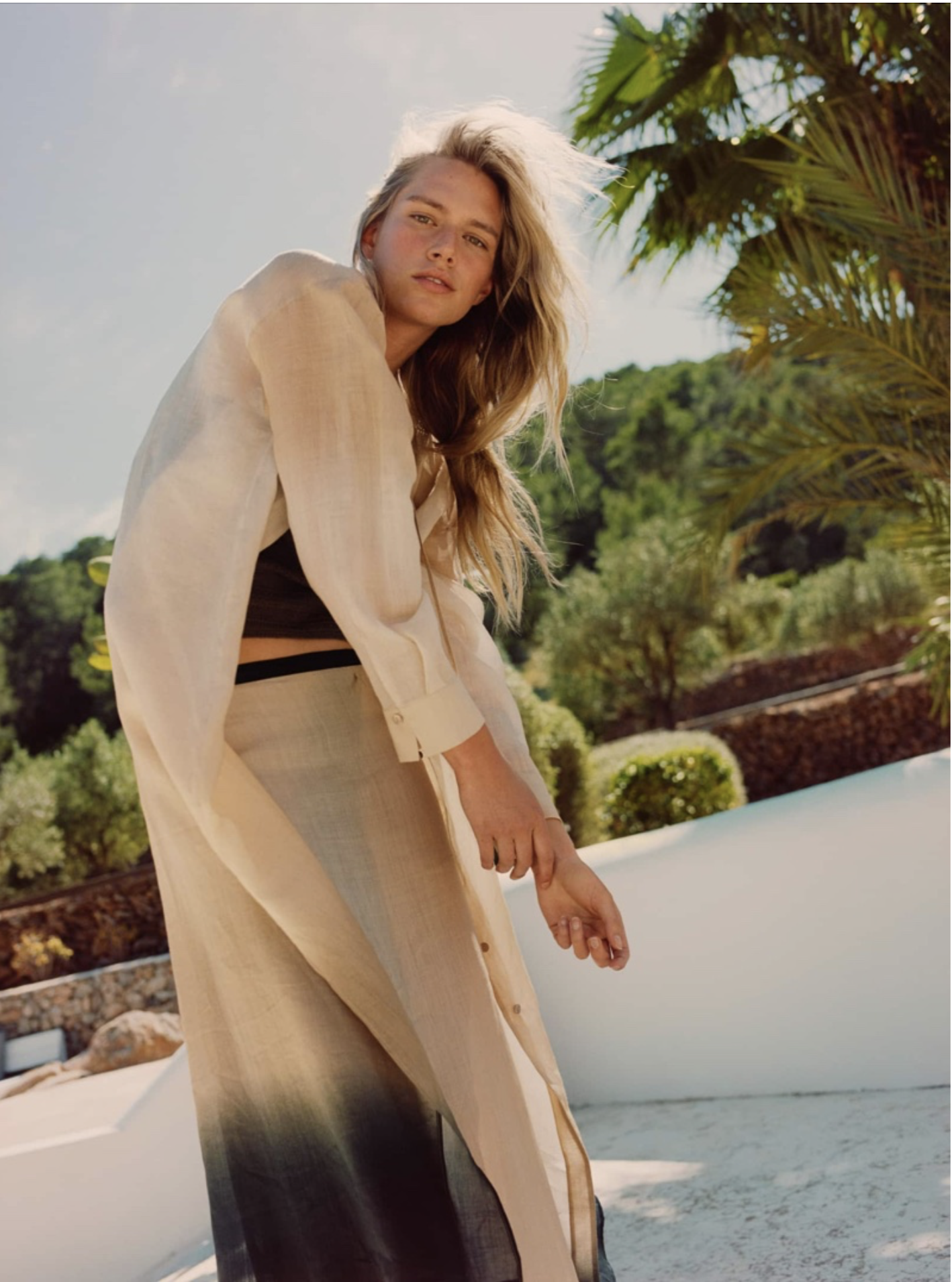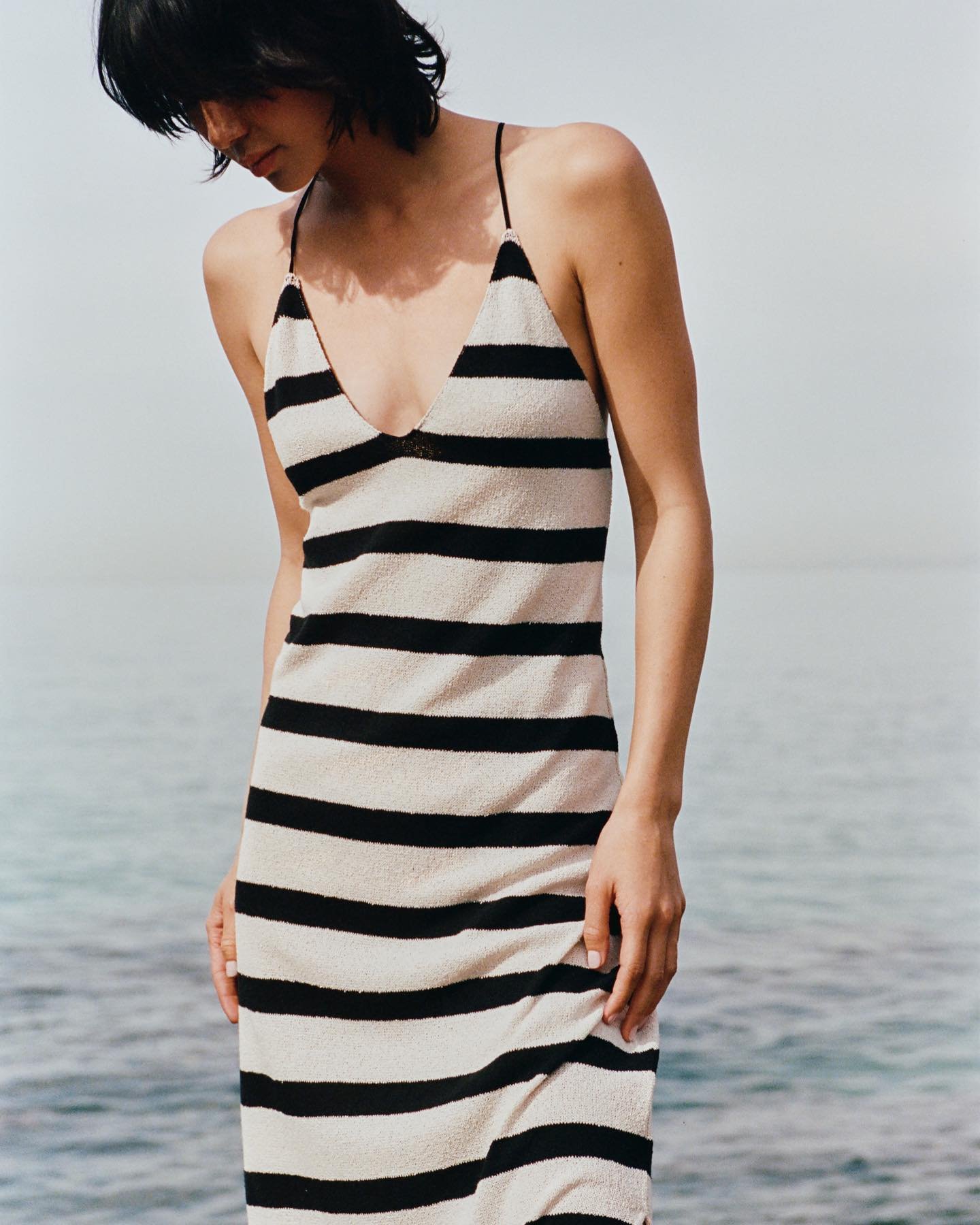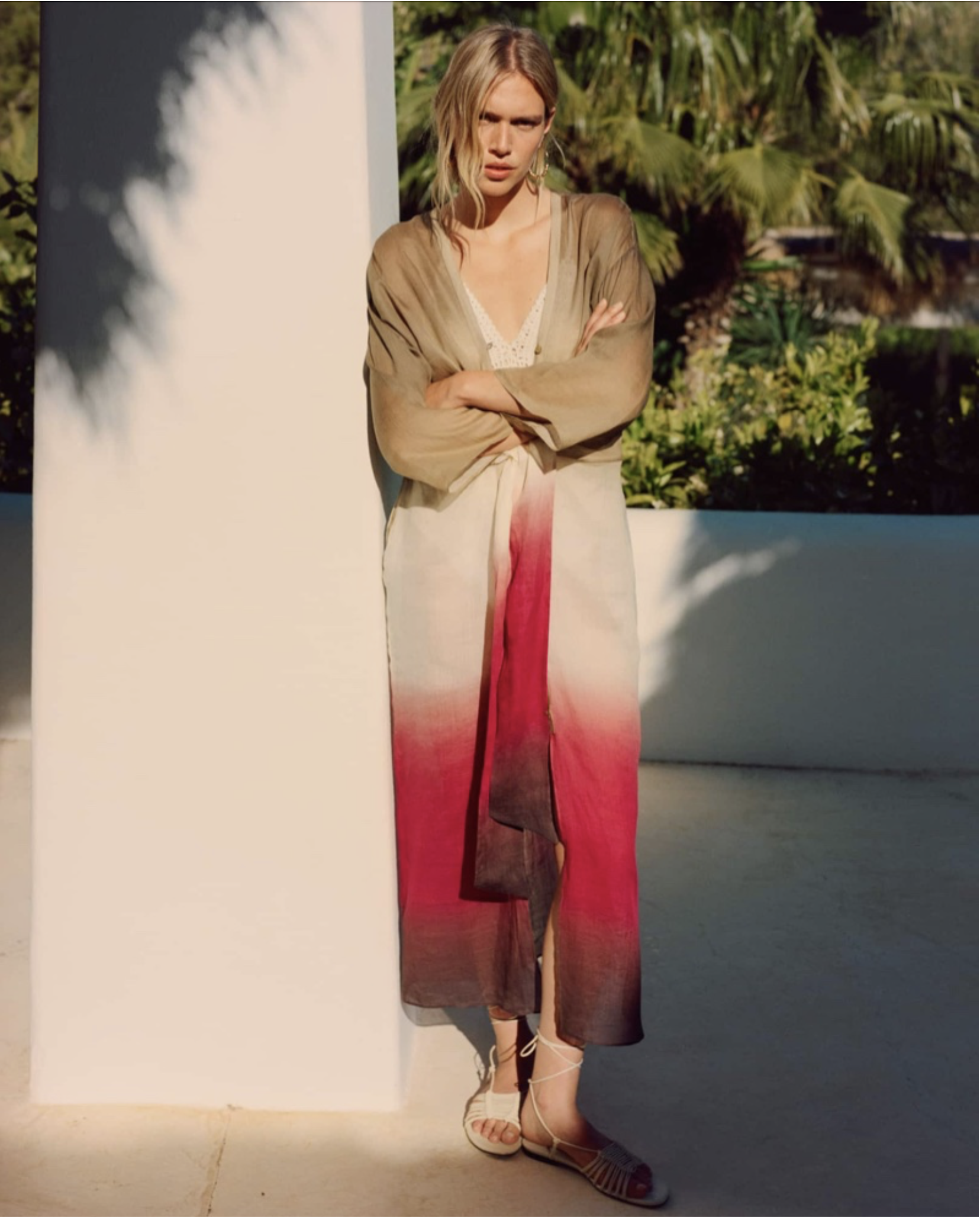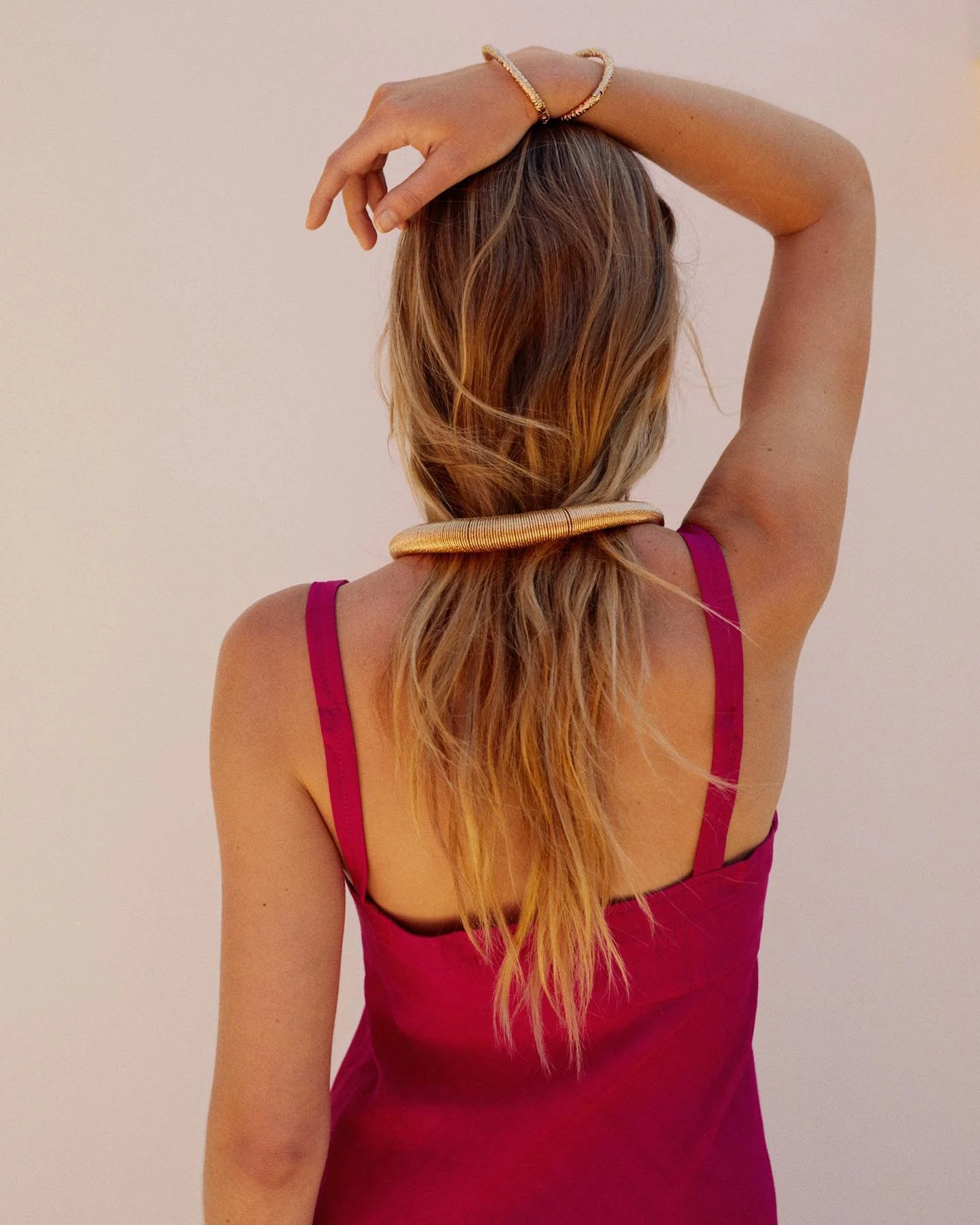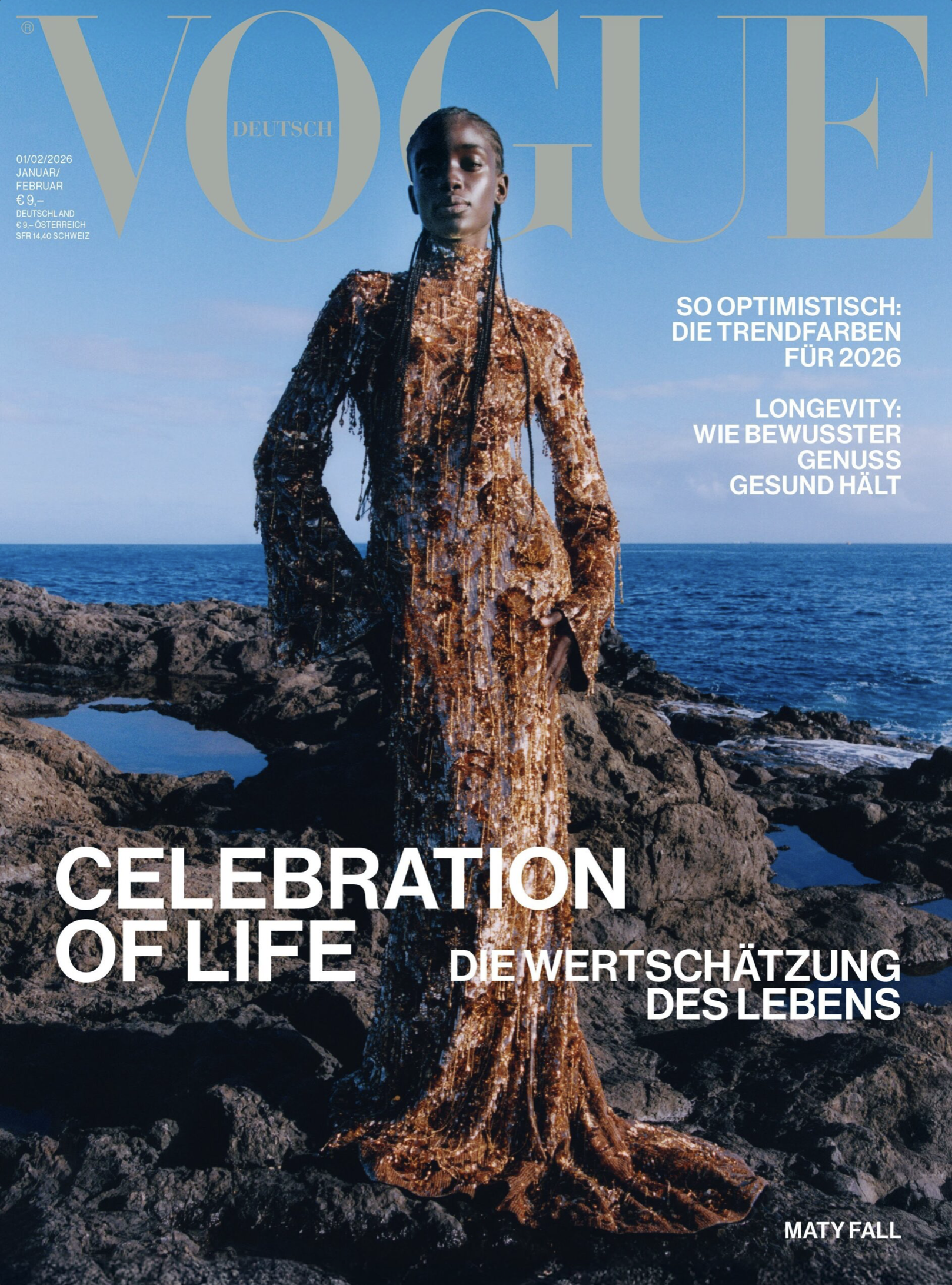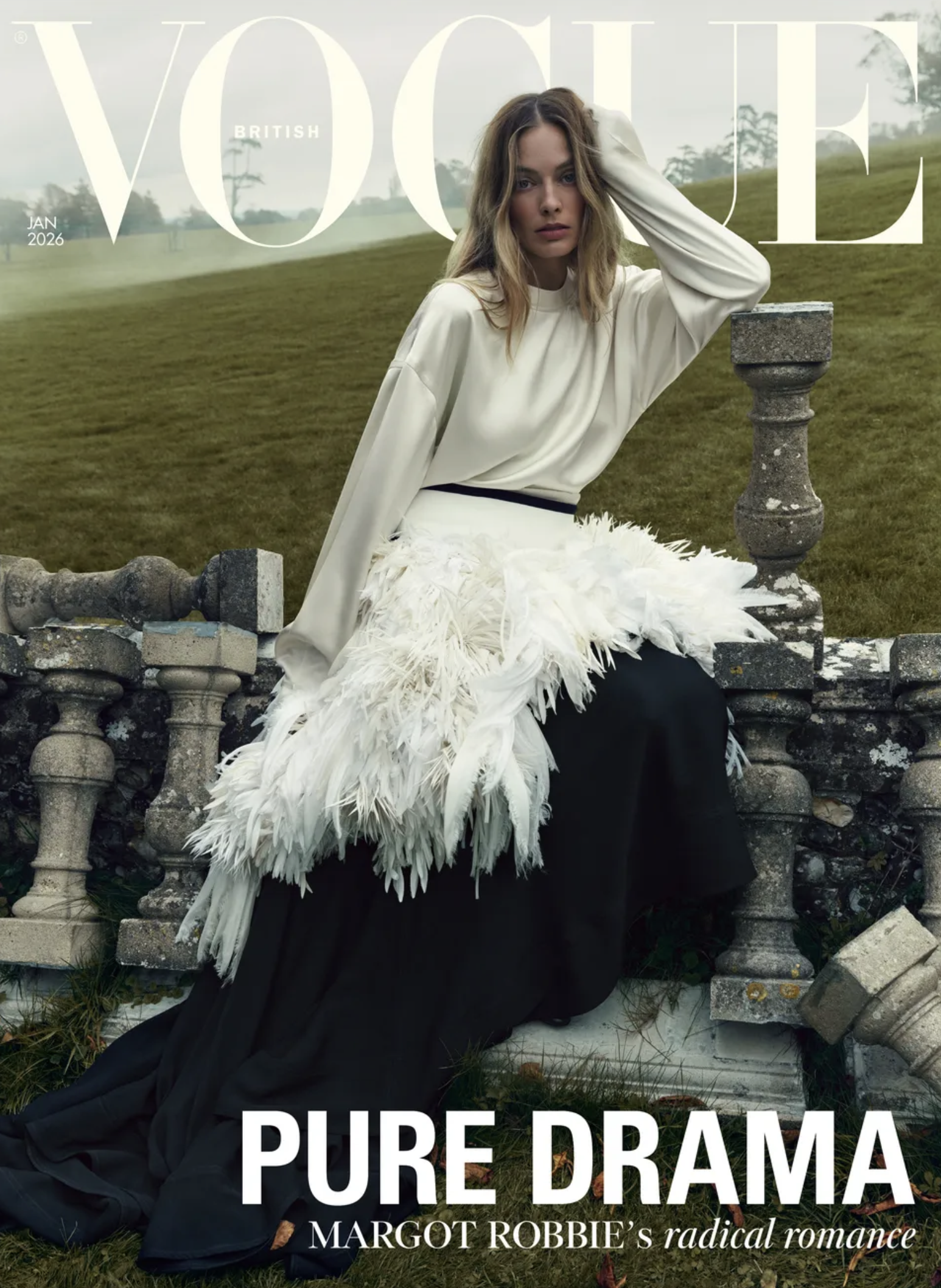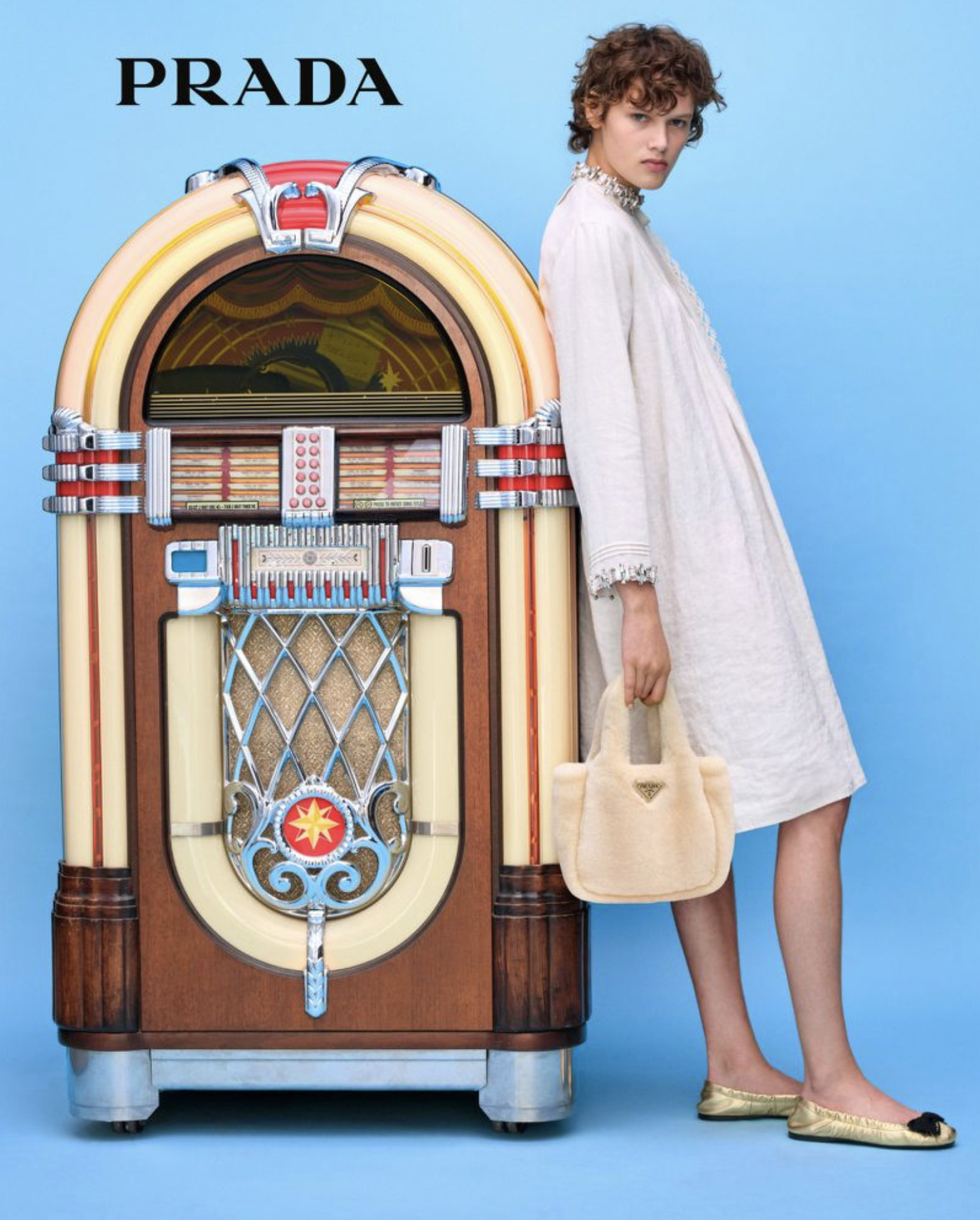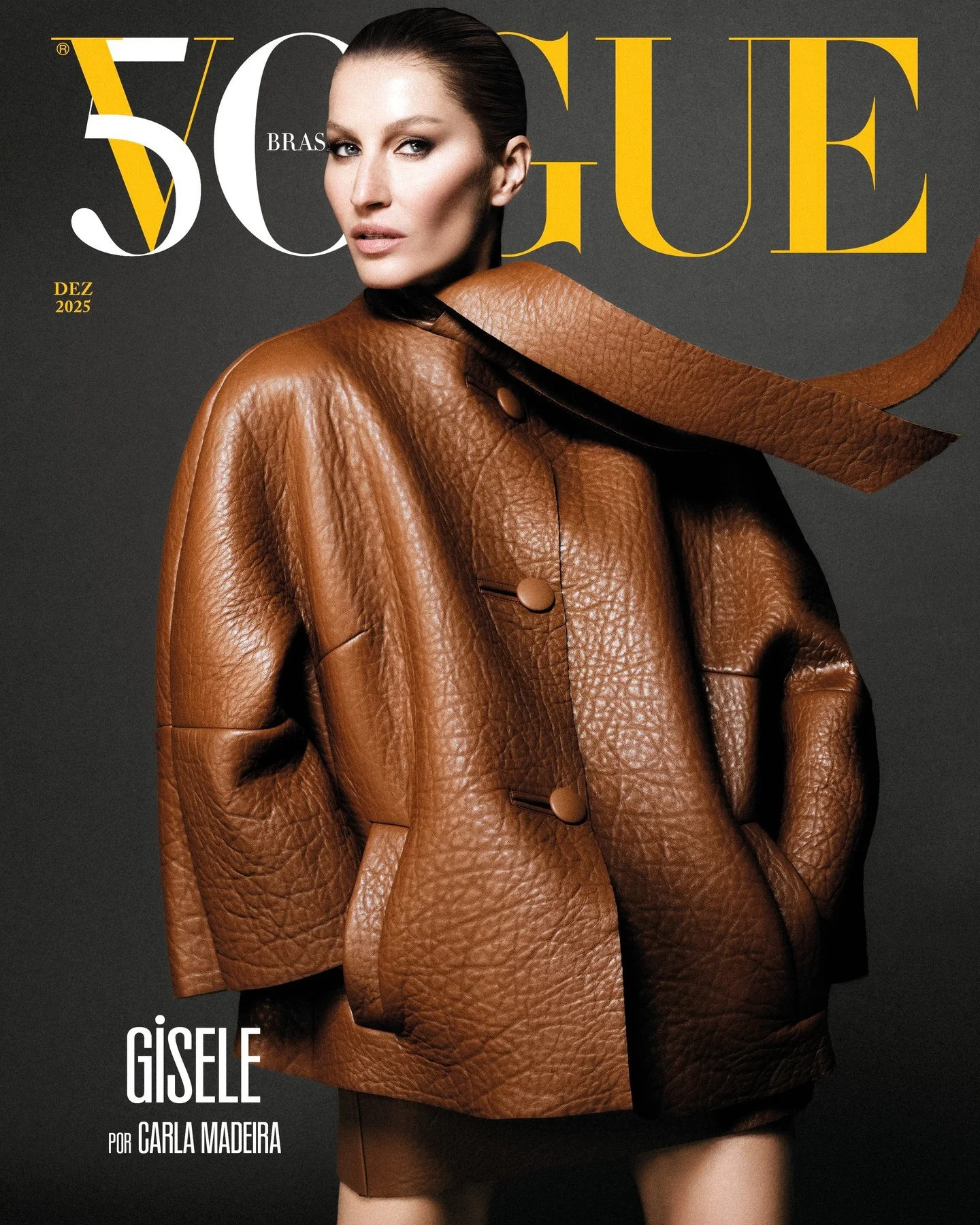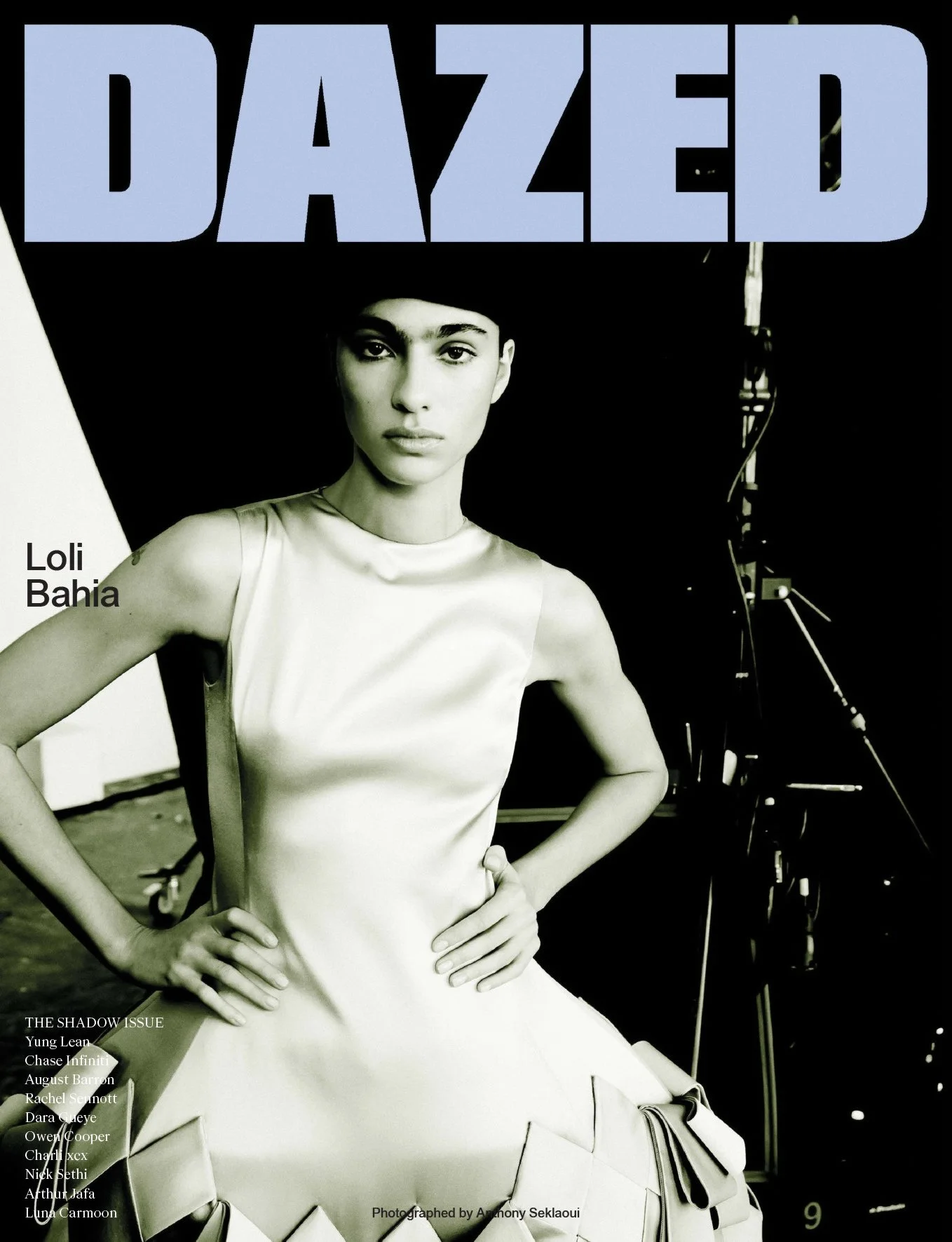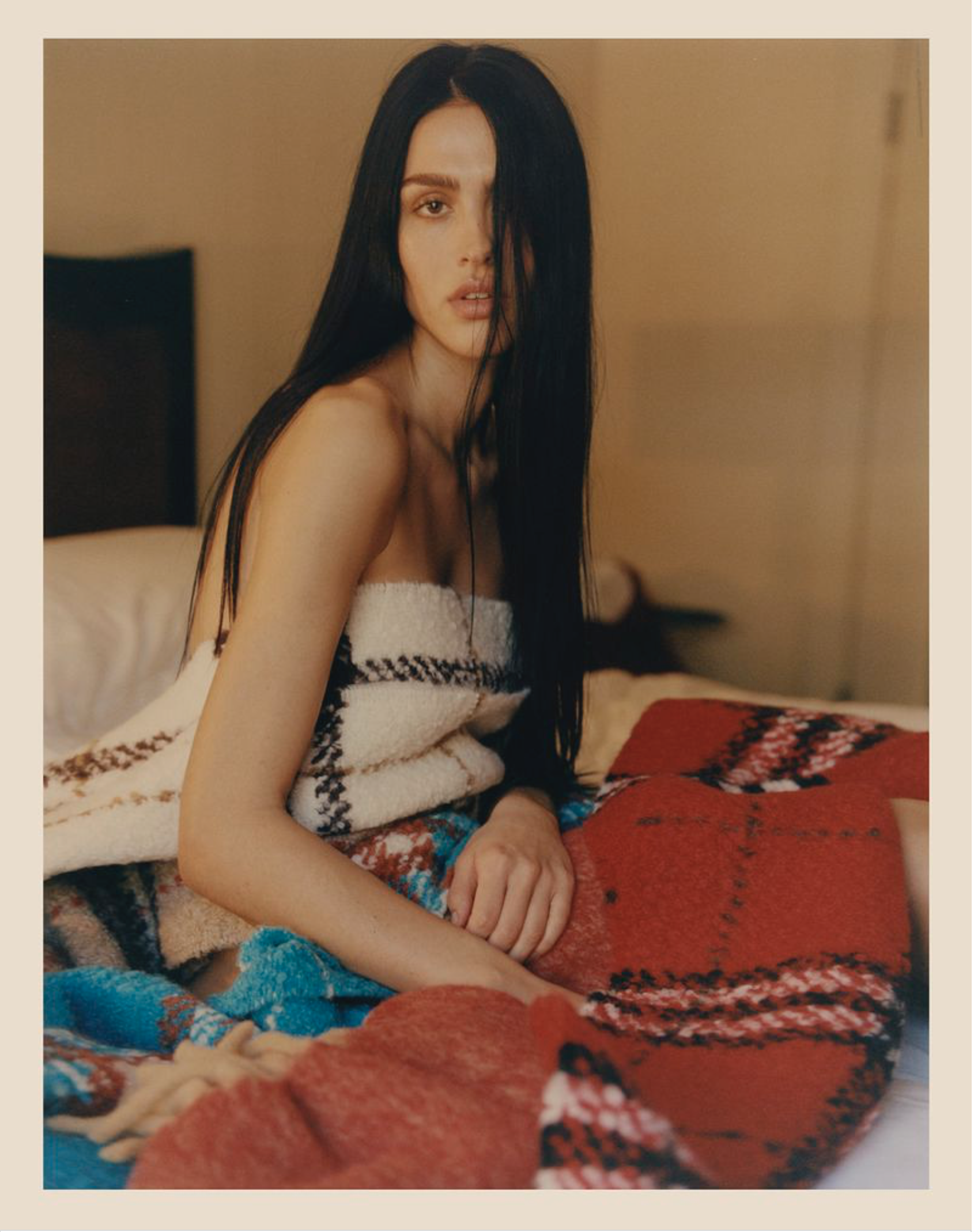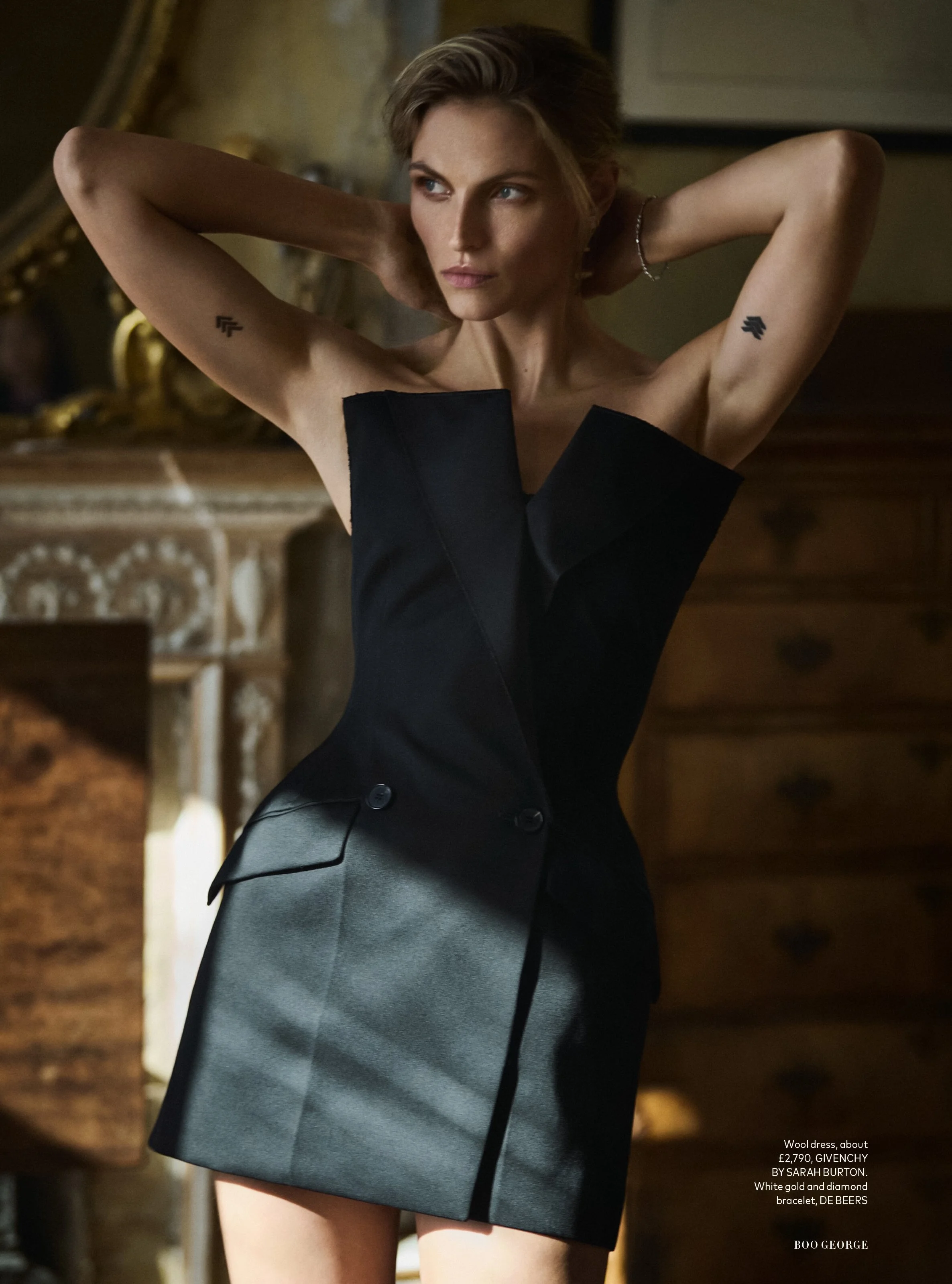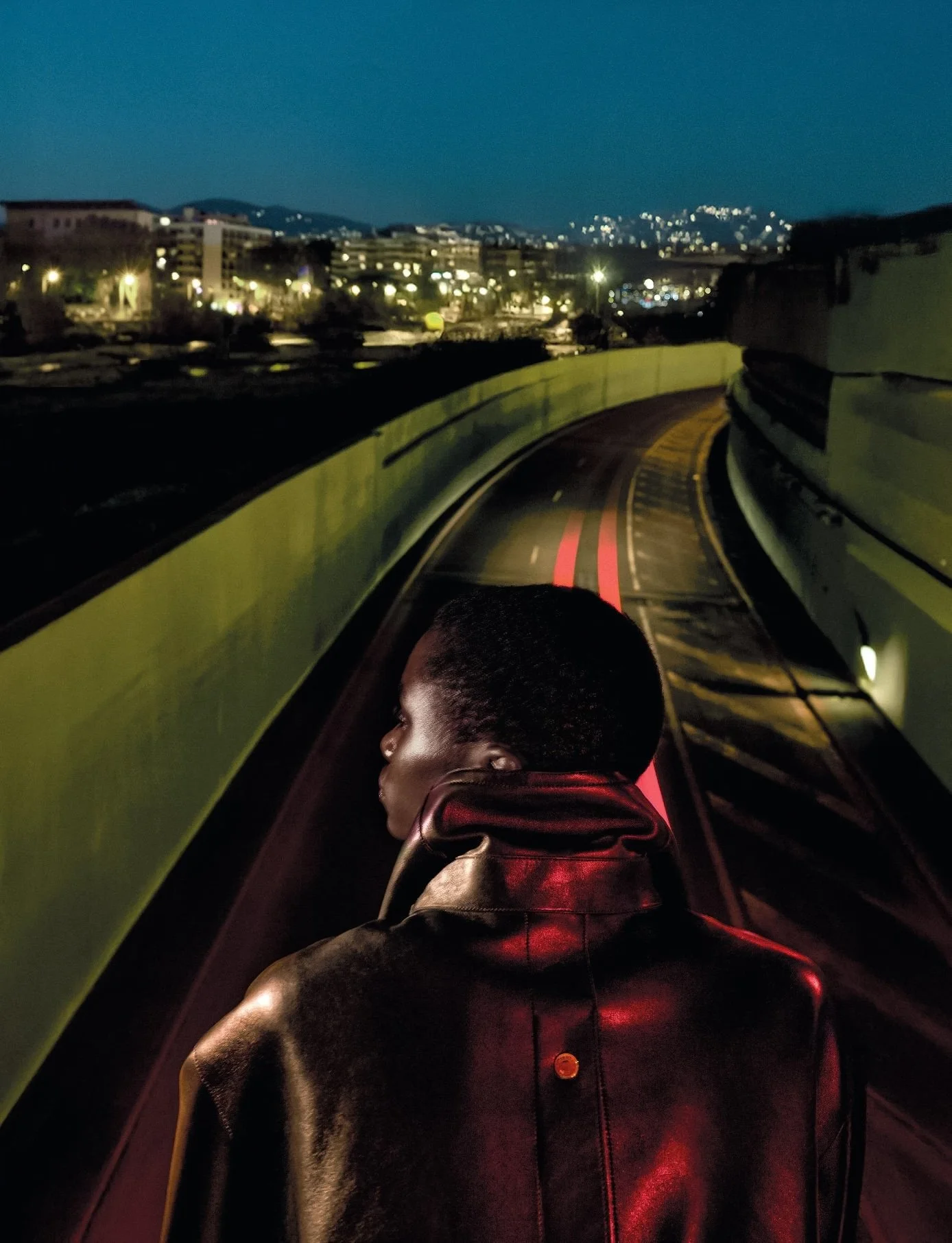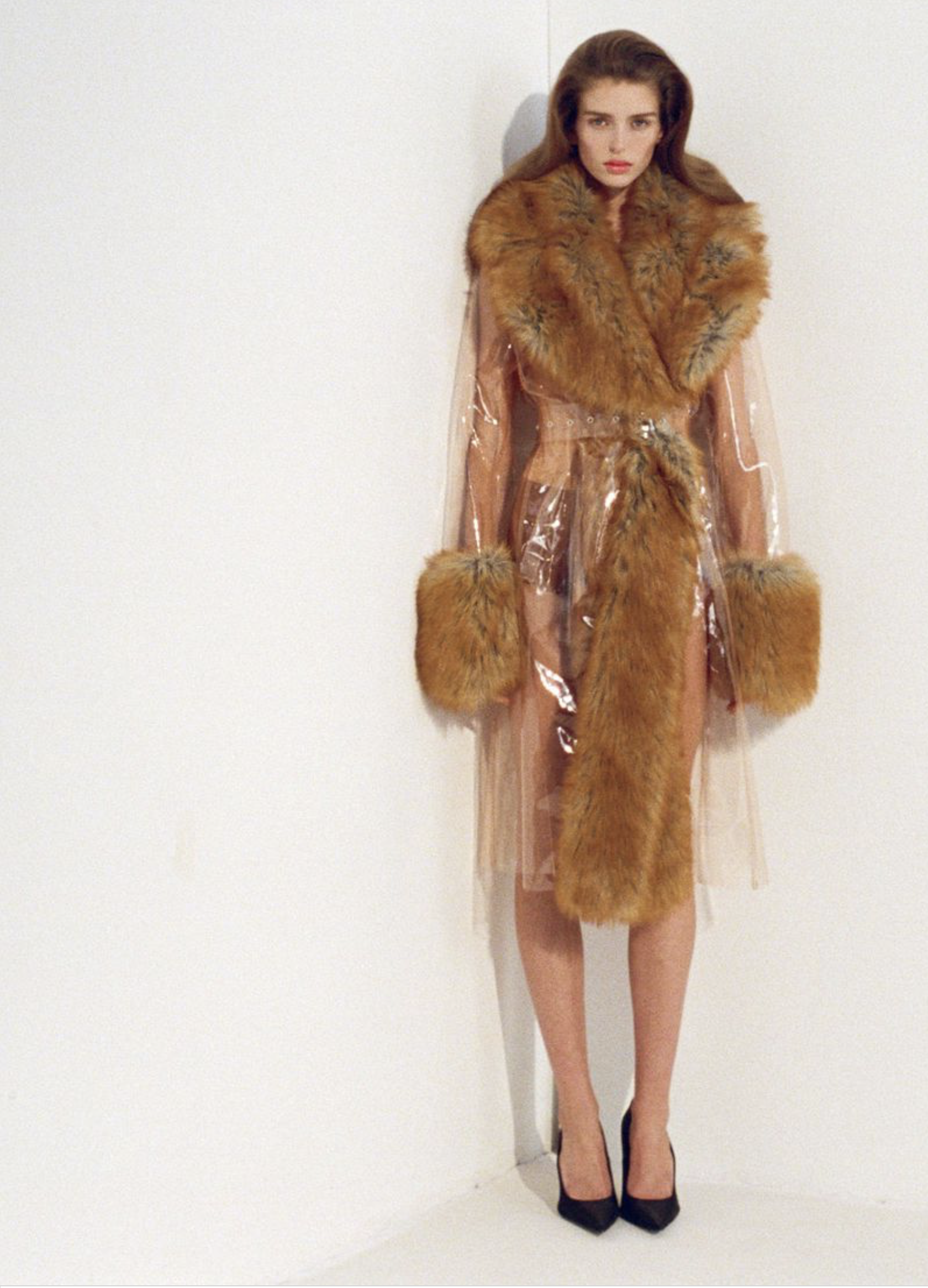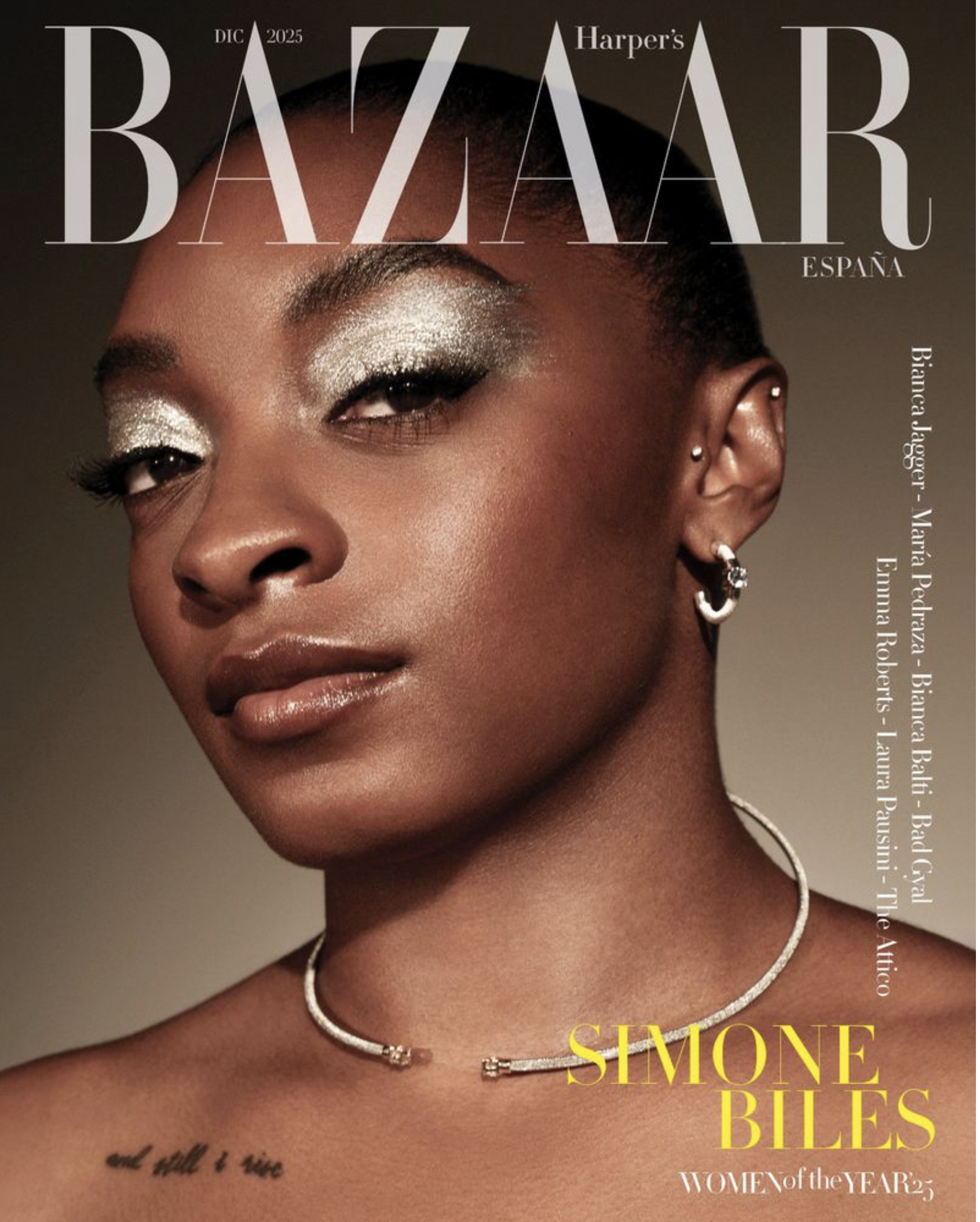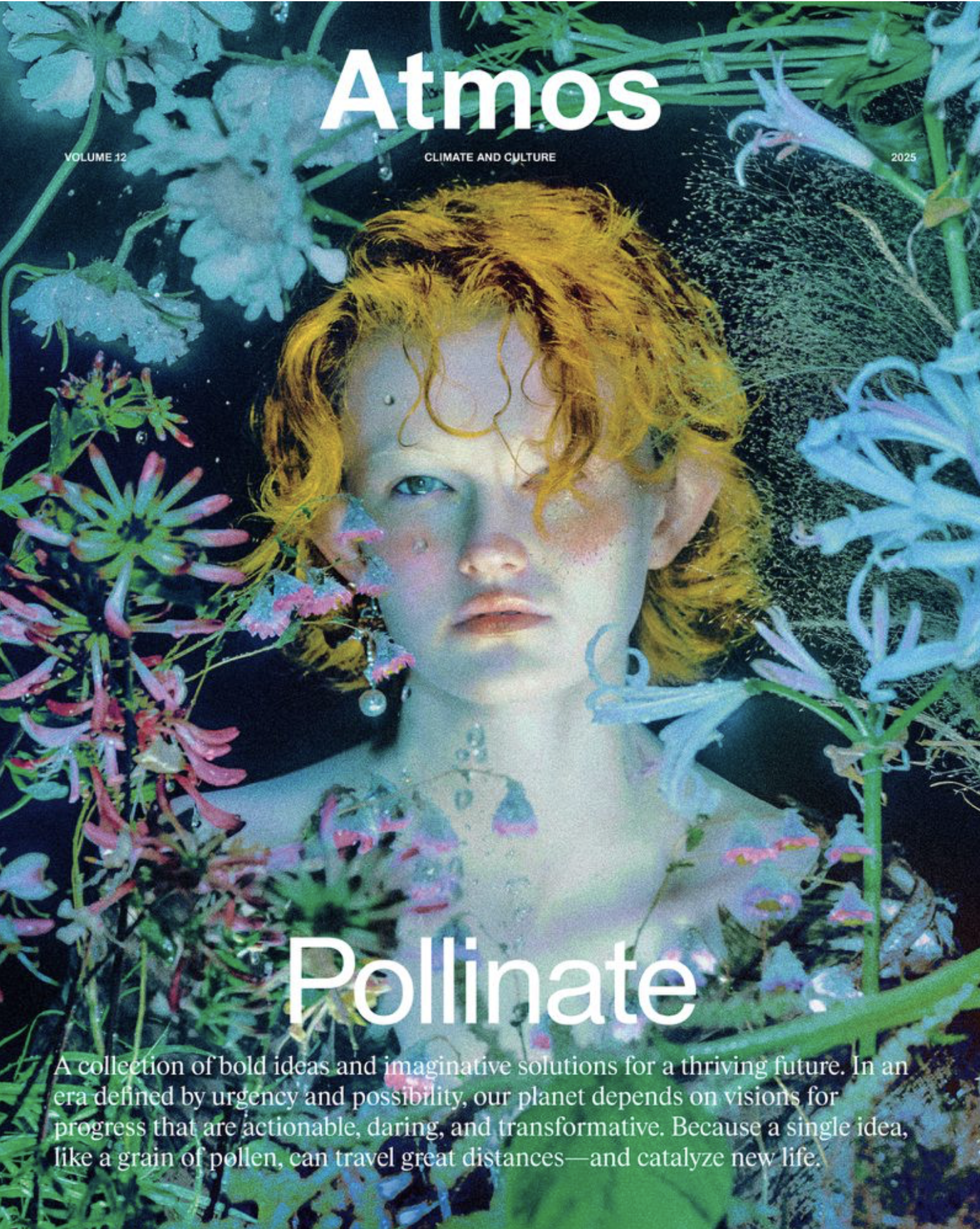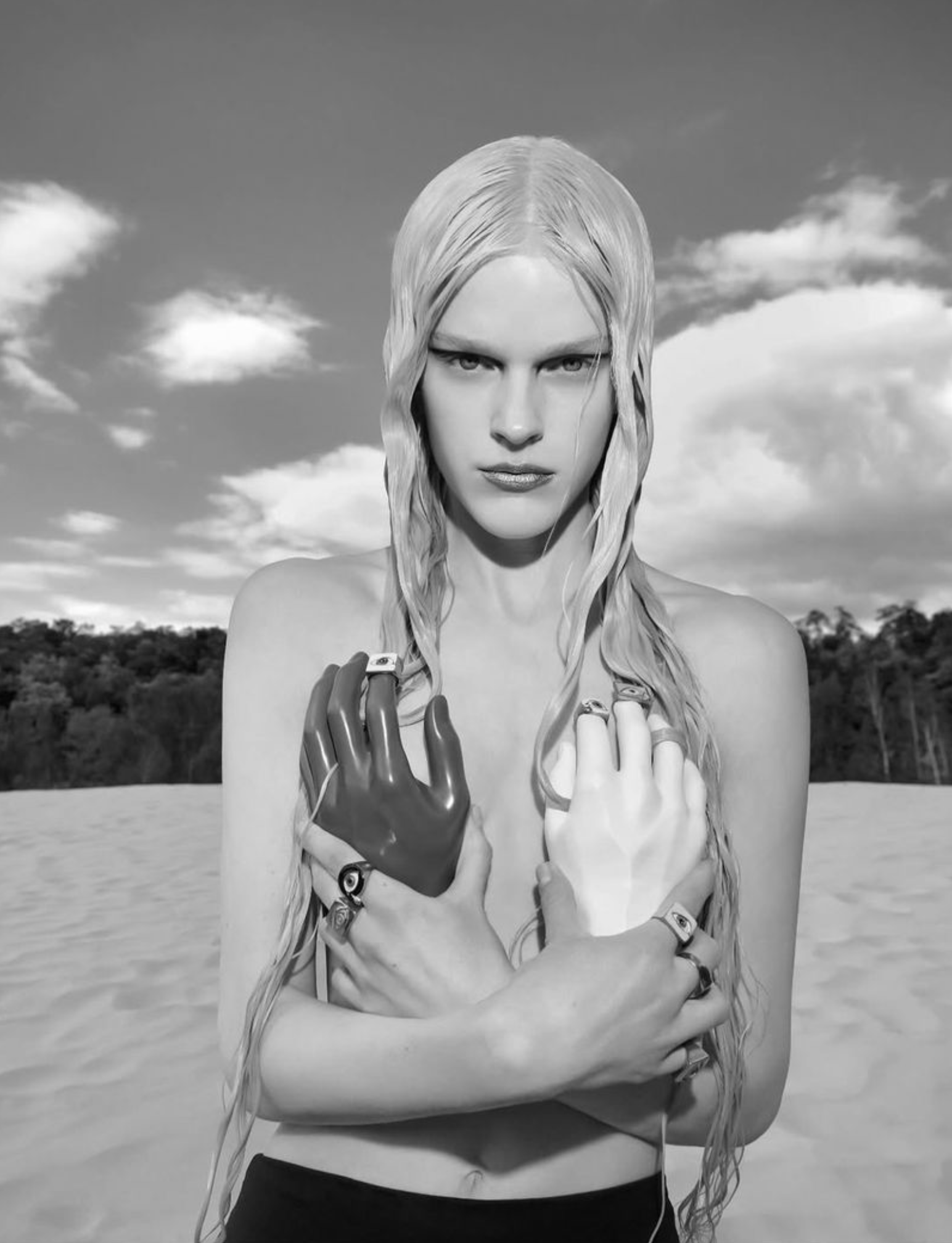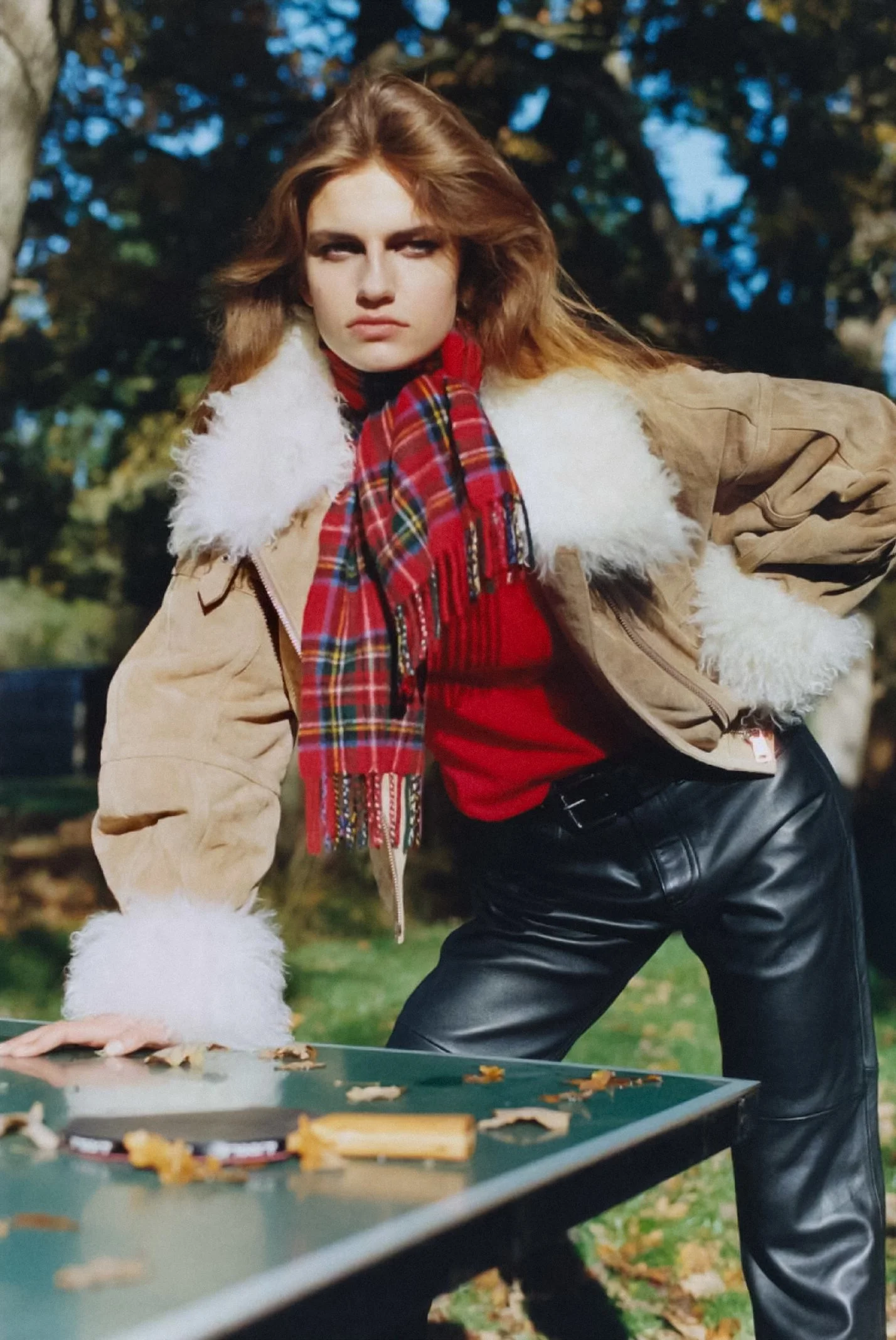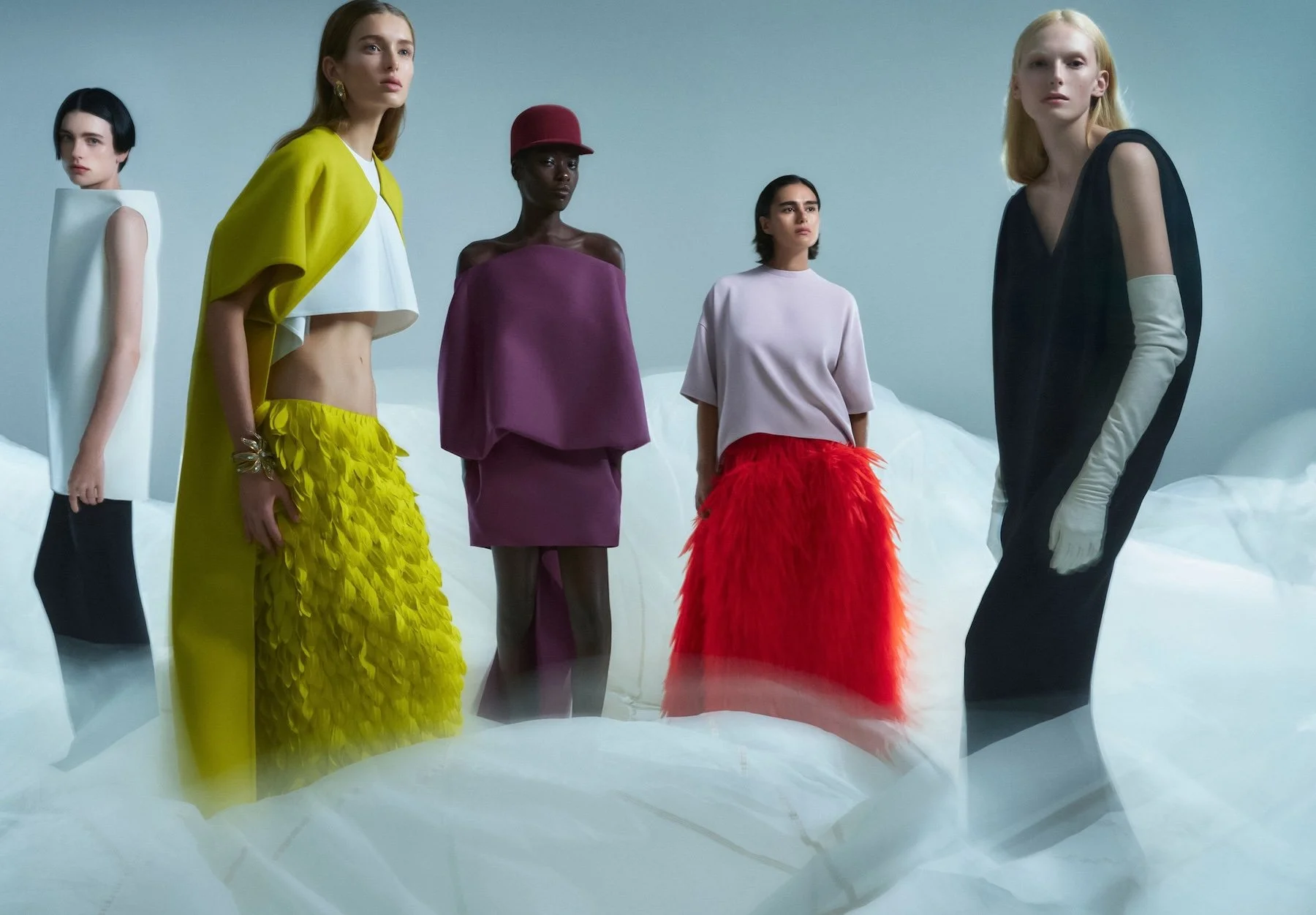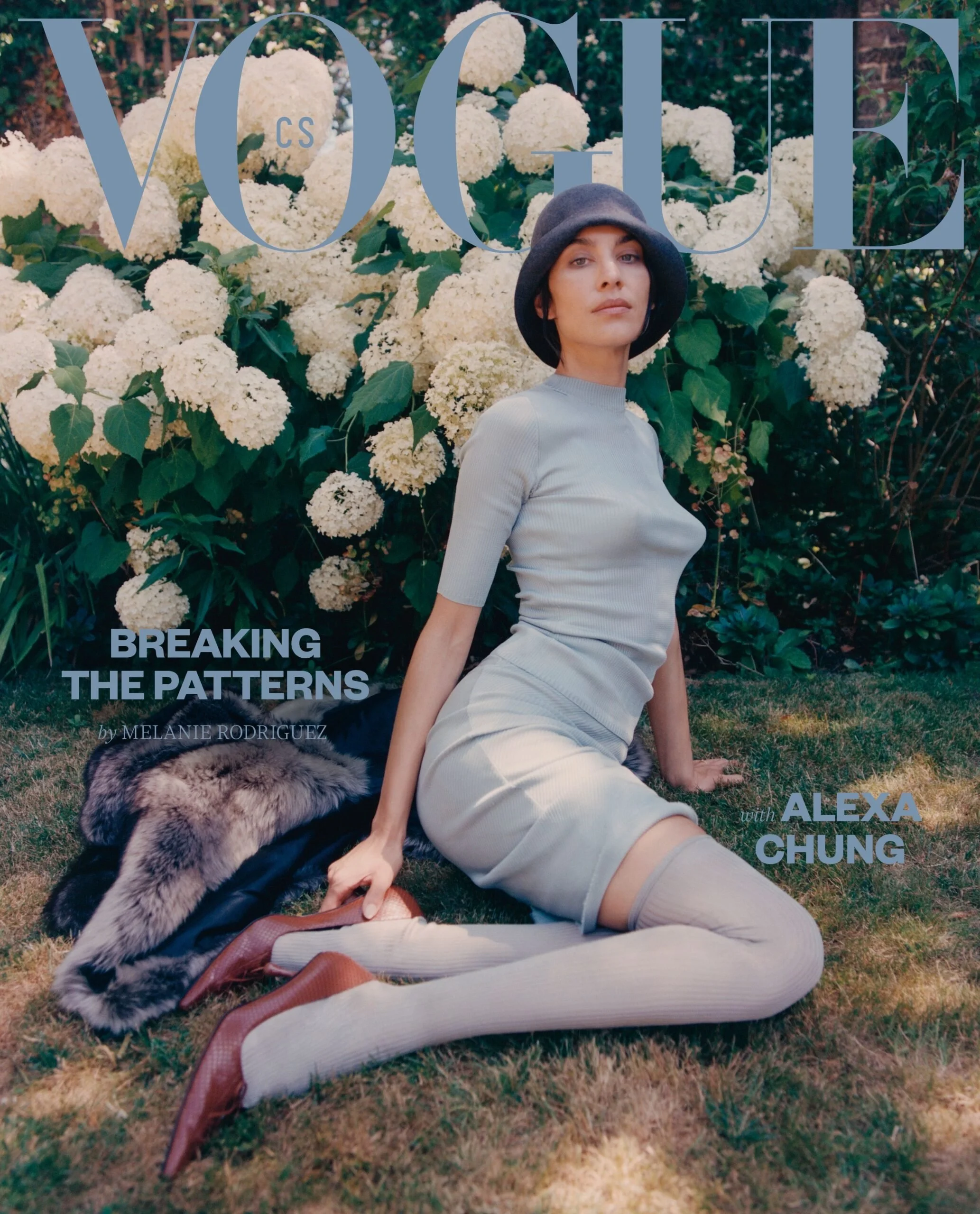Massimo Dutti's 'Sul Mare' Getaway Clothes Are Using More Planet-Loving Fabrics
/Massimo Dutti shares its summer getaway collection “Sul Mare” with a focus on surface interest fabrics like raffia and crochet and angular cuts. The sophisticated collection modeled by Nikki McGuire is heavy with a rough elegance vibe through its use of natural fabrics including linen.
Styled by Delphine Danhier, the collection is photographed by Misha Taylor [IG], who captures the watery tie-dye prints and classic stripes.
We are not in Paula’s Ibiza here, and there is no dopamine dressing bold summer colors. Ibiza’s regenerative agricultural farmers like Arizona Muse would be very encouraged by, but not issue a stamp of approval to the “Sul Mare” 2023 collection. AOC will keep digging.
We’ve been through most of the items online and our estimate is that 30% of the fashion items are sophomores or juniors with maybe 20% ready to graduate high school. The remainder of the fashion collection is stuck in primary grades, when the focus is sustainability.
The use of plenty of raffia in accessories drives the total sustainability grade higher in this capsule. What is frustrating for us — but probably also Massimo Dutti itself — a specific fabric category is not locked down. Cotton is a better example than linen, but we started with linen and will stay with linen.
Focus on Linen
Linen is both linen as we know it [which is better than most fabrics] but also 100% European grown linen. This linen is grown without artificial watering and no GMO seeds and defoliants are used. It is produced in Western Europe and complies with the EUROPEAN FLAX® standard of the European Confederation of Flax and Hemp (CELC). Also this item is made in Portugal.
Calling Out Ramie
Massimo Dutti is also using ramie, an eco friendly fabric and the highly sustainable fiber, that is airy and beautiful. Ramie is made from the stalks of flowers and plants and is a chic vegan silk alternative or very lightweight linen which is lighter and airier, while obviously tailoring well. The duster or dress above image is made of ramie.
The actual fiber just says ‘ramie’ without spelling it out as a sustainable fabric. In fact, it’s an excellent fabric, although we don’t know about the dye process. They are getting no credit for this fabric, and AOC only found it because we are trying to encourage the industry to use more sustainable fabrics, and we are nerds when writing about sustainability. Now we must write up ‘ramie’.
Actually, I just did a ramie search on MD, and all these items are made with the fiber. It appears that most or all of the Massimo Dutti ramie products are also made in Portugal, which has a better chance of eco-friendly dye processes and positive worker welfare.
And they are taking NO credit when increasing numbers of consumers welcome and are searching for sustainable fabrics. They are doing some good work in cotton also, but time’s up.
Perhaps Massimo Dutti should hire Anne of Carversville to cover their sustainable products. Because this is stupid, and they deserve better credit for when they do act responsibly to help the planet.
Based on finding ramie and seeing its extensive use, AOC will go back to start and change our report card — no thanks to Massimo Dutti’s product descriptions. This is not a case of grade inflation, but rather good news. ~ Anne

